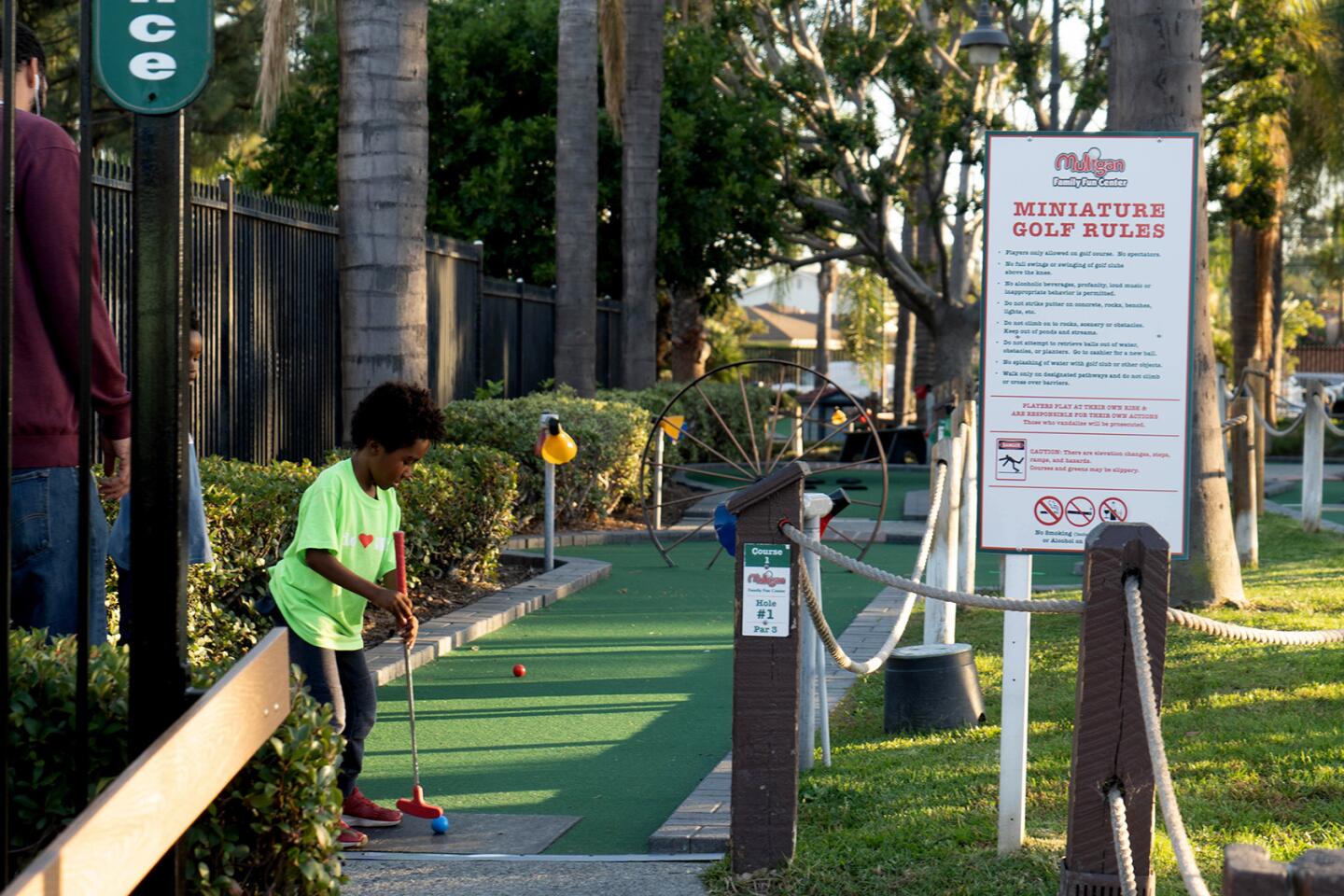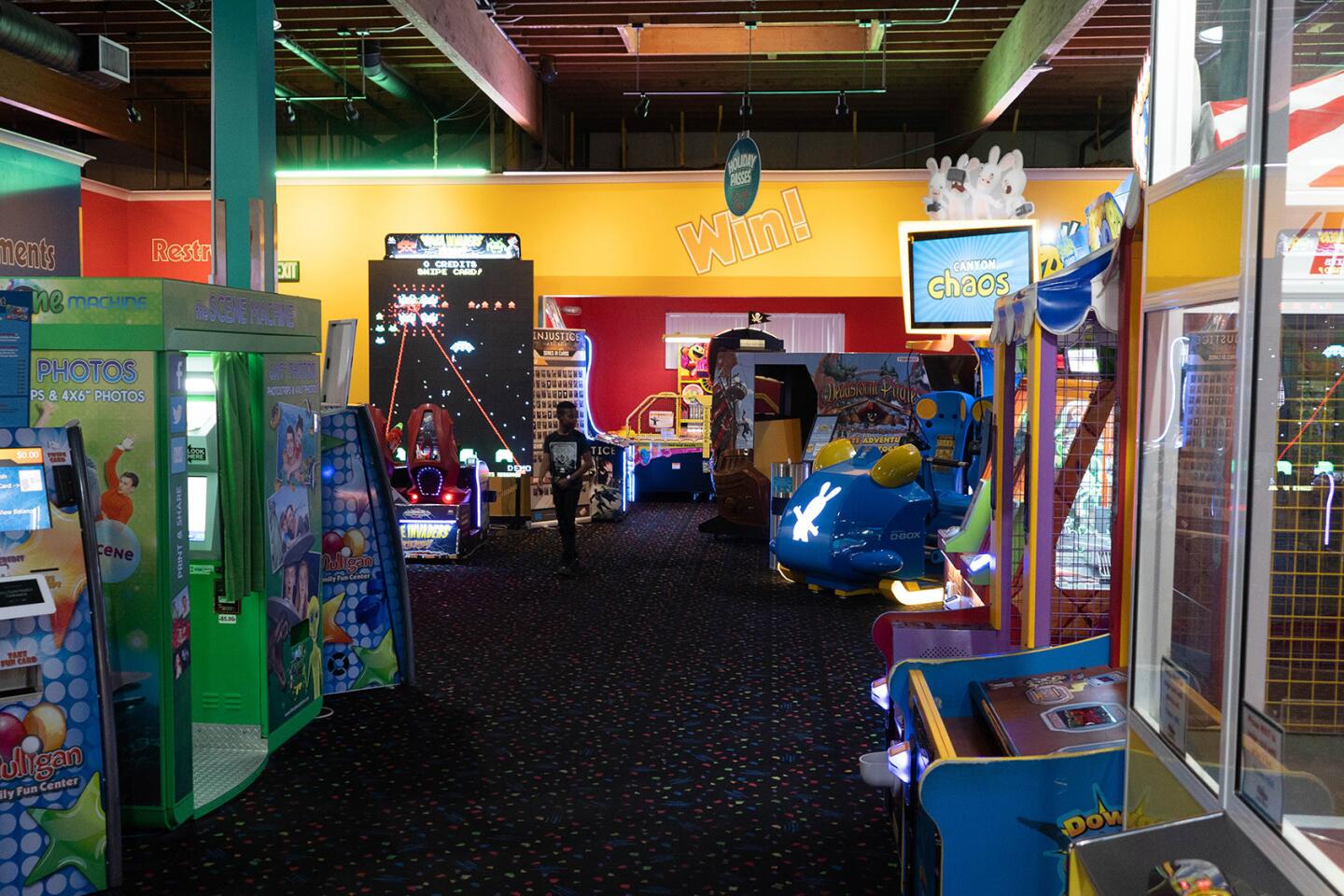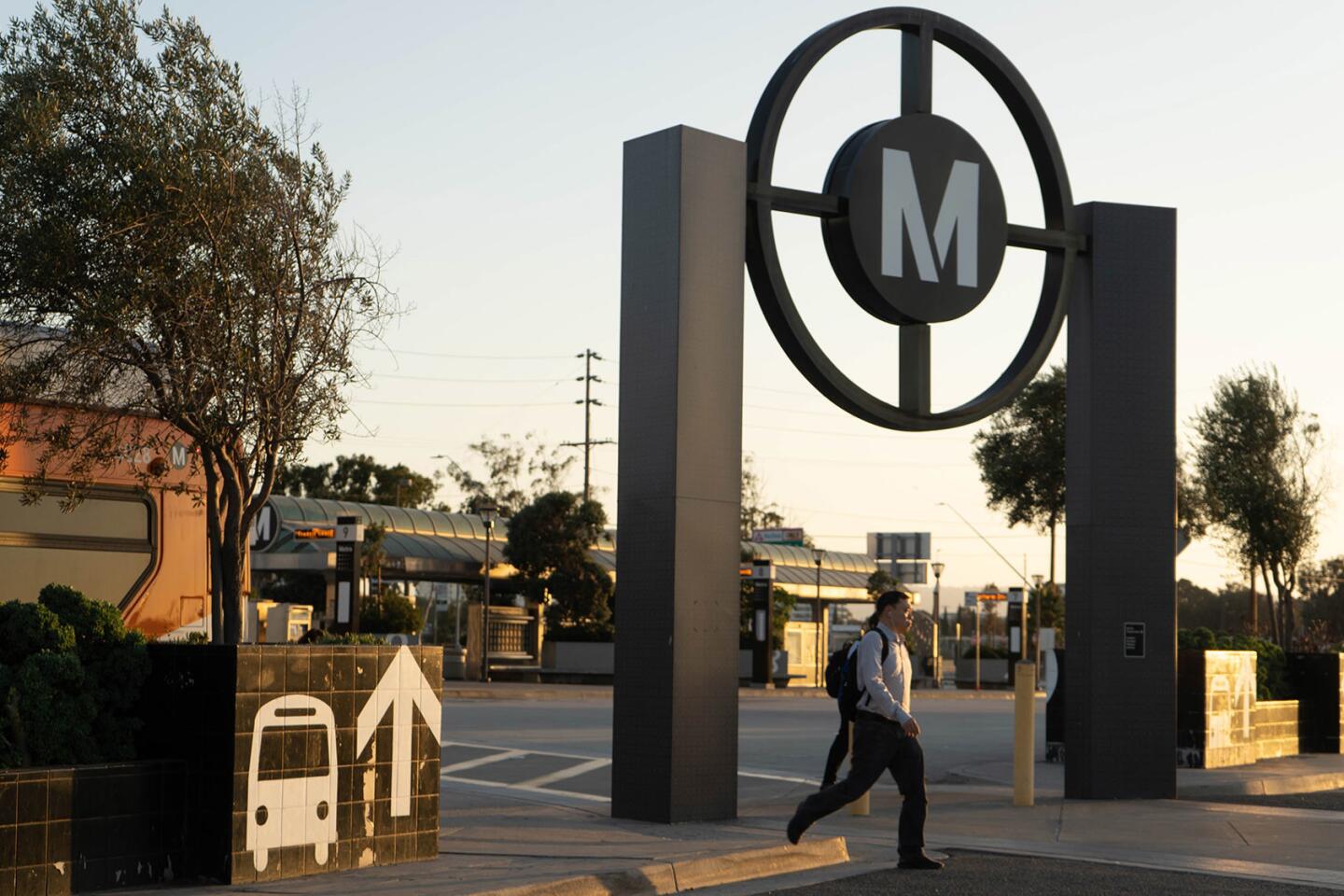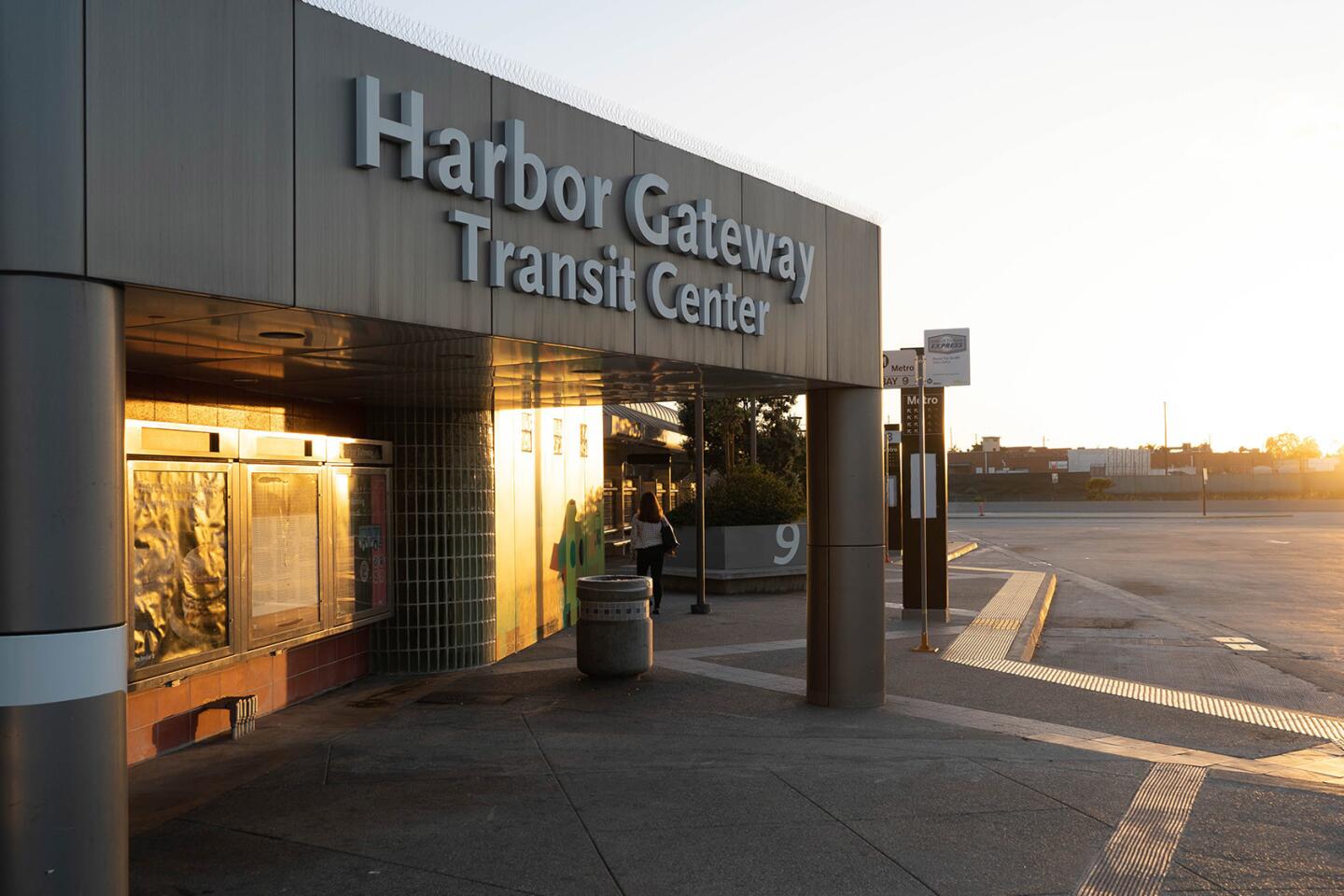Neighborhood Spotlight: Harbor Gateway has moved from a sparsely populated connector to an affordable, diverse community
- Share via
Harbor Gateway — the long, narrow stretch of Los Angeles snaking south to the port, wriggling between Torrance and Carson — is an artifact of L.A.’s 19th century quest to attain a harbor to facilitate its rapid growth.
Beginning in the 1890s, when the need for a municipal harbor became acute, seaside communities near L.A. began jockeying to host that port.
Spurred on by the promise of a $4-million congressional grant to fund a breakwater for the harbor, Santa Monica and San Pedro soon hurled themselves into a bitter face-off that became known as the “Great Free Harbor Fight.”
Although San Pedro had the advantage of an existing port, it was shallow and unsuitable for the deep drafts of modern ships.
A competing plan by the Southern Pacific Railroad would transform the sleepy seaside town of Santa Monica into a shipping center wholly owned and operated by the railroad.
A years-long legal battle ensued. After a court ruling in 1897, San Pedro secured the federal funding, and work on the breakwater commenced.
To gain total control over the port, L.A. set about annexing San Pedro and neighboring Wilmington. But before civic leaders could finalize the takeover of the harbor, they first needed to connect it to the city proper, 24 miles to the north.
They struck upon a plan to send a tendril of Los Angeles threading southward to the harbor, creating a contiguous path from downtown to the waterfront. This strip was added to the city in 1907 and two years later the harbor cities themselves were annexed.
The neighborhood for many years had no formal name. Most Angelenos called it the shoestring strip, and it was sparsely populated and little-developed for decades.
During World War II, its southern end became an industrial center while the north remained semirural farmland. After the war, many Japanese Americans returning to L.A. from relocation camps resettled in the north, where they resumed the operation of numerous small farms and nurseries.
The postwar housing demand increased residential development in the north, attracting new residents from a wide variety of ethnic backgrounds. By the time the neighborhood was dubbed Harbor Gateway in 1985, it was one of the most diverse in the city, and remains so to this day.
Neighborhood highlights
Freeway close: Harbor Gateway commuters are served by the 405, 110 and 91 freeways, which makes for relatively easy trips to downtown, Orange County, the harbor and the South Bay.
Transit options: The Harbor Gateway Transit Center provides bus connections to the popular Silver Line route, and the northern end of the neighborhood is served by the Green Line.
Housing at all price points: Homes can still be had for less than $600,000 in Harbor Gateway, but there is also a growing stock of new construction homes that reach into the high $800s.
Neighborhood challenges
Neither here nor there: Harbor City has long suffered from a lack of defining characteristics because of its unique shape, and complaints about a lack of service from the city are endemic.
Expert insight
Joy Johnson has been selling homes around Harbor Gateway for nearly a decade. She said that because of its long, shoestring shape, the neighborhood rarely identifies as a whole, but that doesn’t mean there’s a lack of community.
“We have neighborhood councils for the north and south sides of Harbor Gateway, and they’re tuned in to the specific needs of their areas,” Johnson said.
The neighborhood is fairly built-out, but Johnson said Harbor Gateway isn’t development-free. Within the last year, two affordable housing projects have been announced — one with 160 units of varying size, and one with 54 studios built out of shipping containers.
In terms of the housing stock, there’s a healthy number of single-story homes in the $500,000-to-$600,000 range.
Market snapshot
The majority of Harbor Gateway is found within three ZIP Codes. The one with the most home sales in September was 90501, where, based on 21 sales, the median price for single-family homes was $630,000, down 8% year over year, according to CoreLogic. Next was 90247 in the north, where the median price among 15 sales in September was $520,000, up 2% year over year.
Report card
Of the five public schools in the Harbor Gateway boundaries, three scored above 800 on the 2013 Academic Performance Index: 186th Street Elementary at 838, Halldale Elementary at 835 and Gardena Elementary at 801.
Gardena Senior High scored 641 and 135th Street Elementary scored 752.
Times staff writer Jack Flemming contributed to this report.
More to Read
Sign up for Essential California
The most important California stories and recommendations in your inbox every morning.
You may occasionally receive promotional content from the Los Angeles Times.










